Polygonum aviculare (Common Knotweed) - photos and description
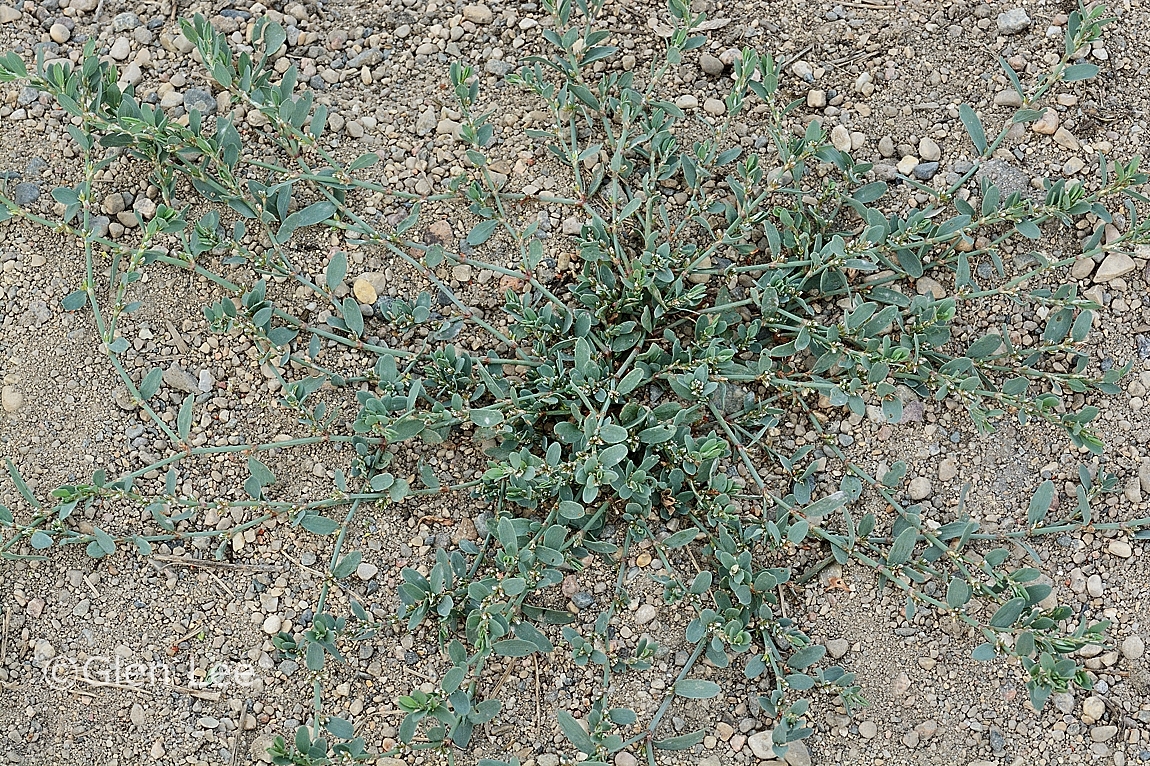
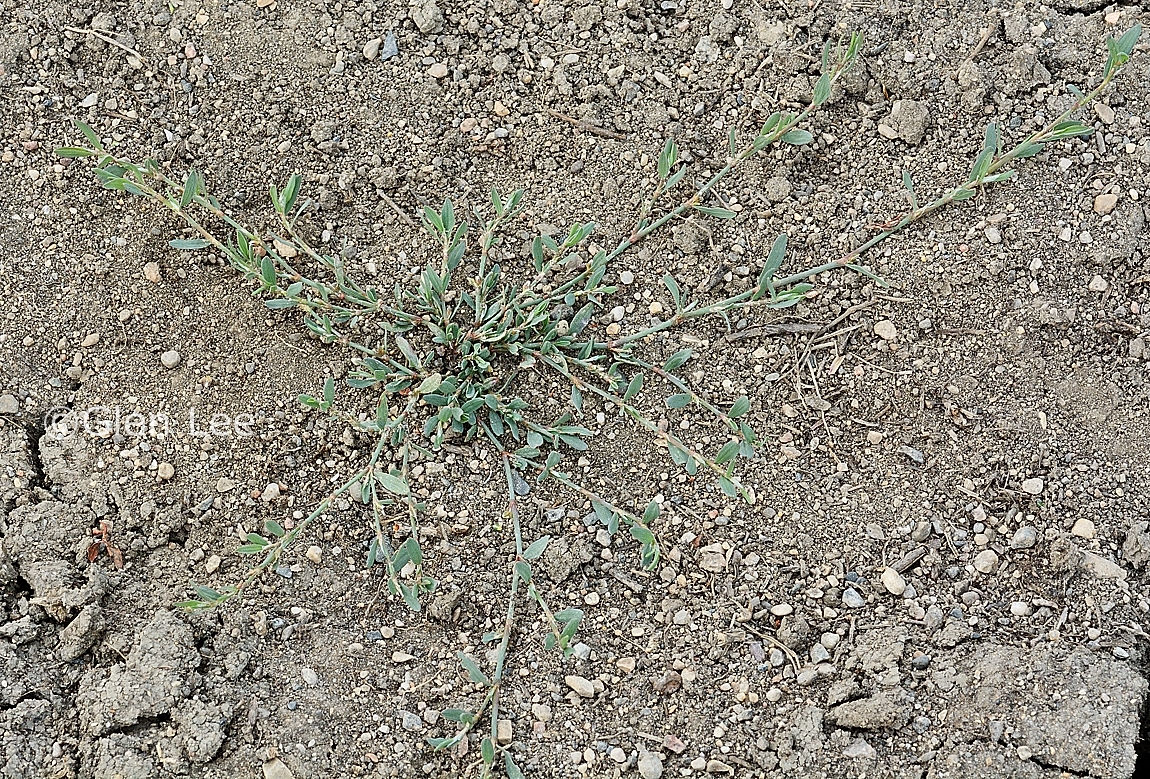
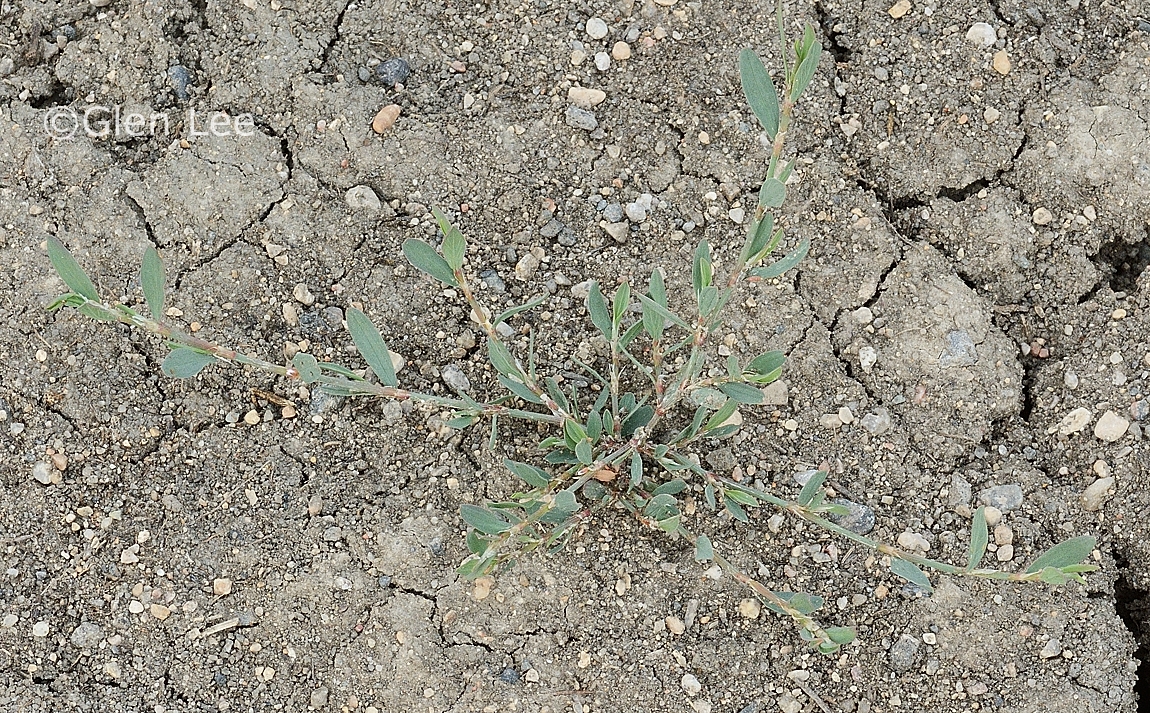
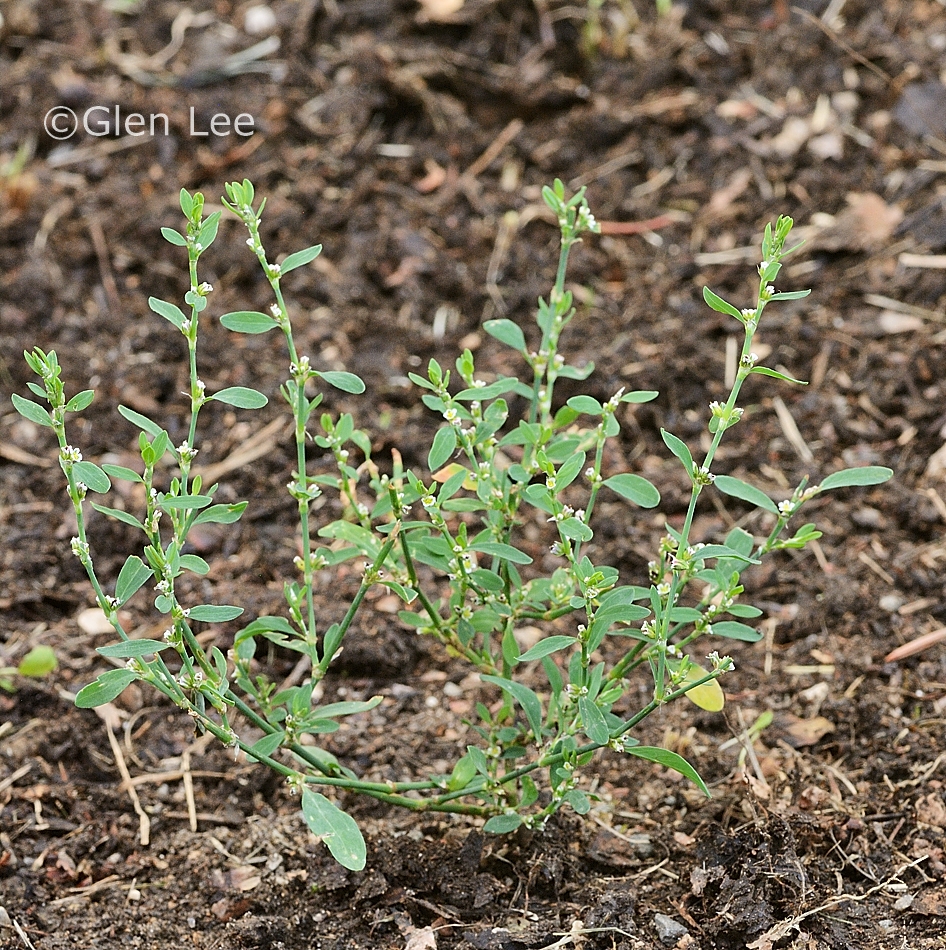
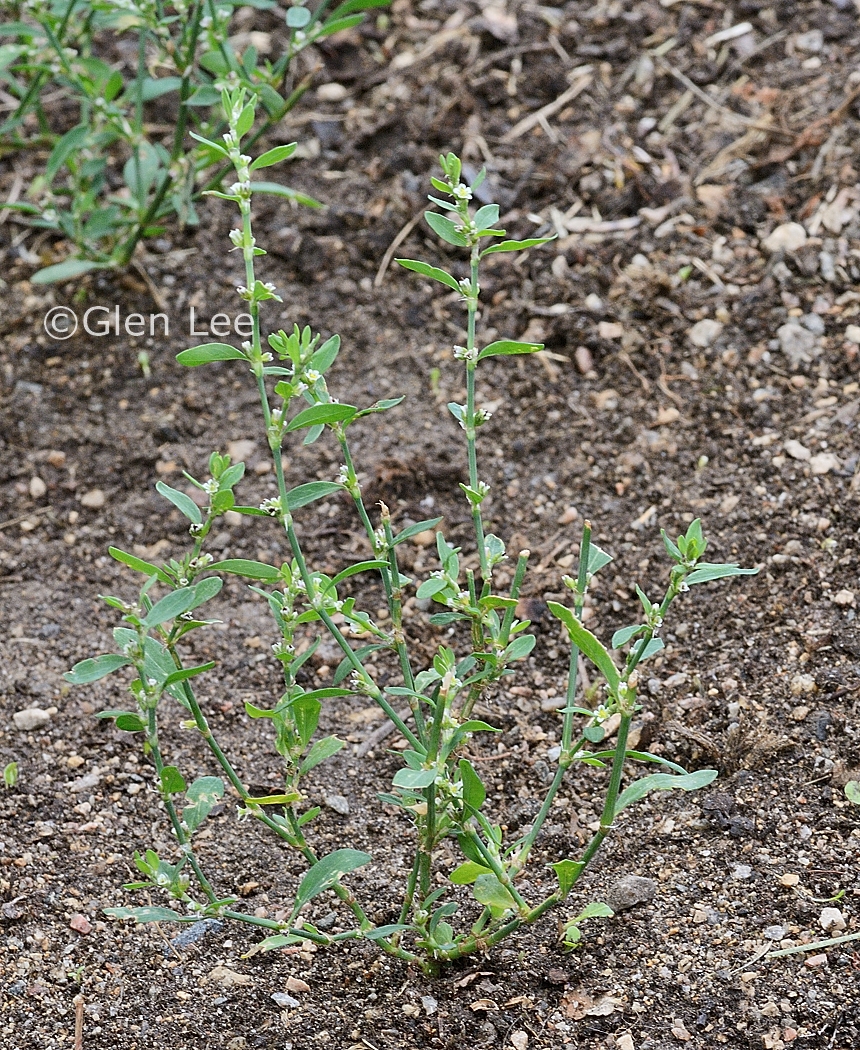
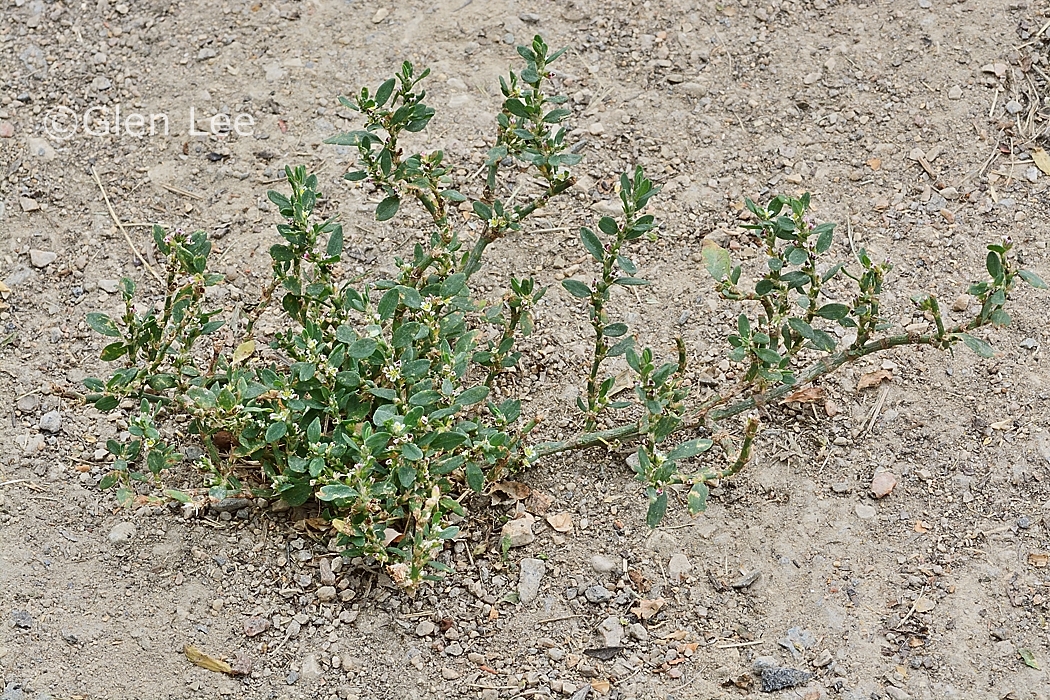
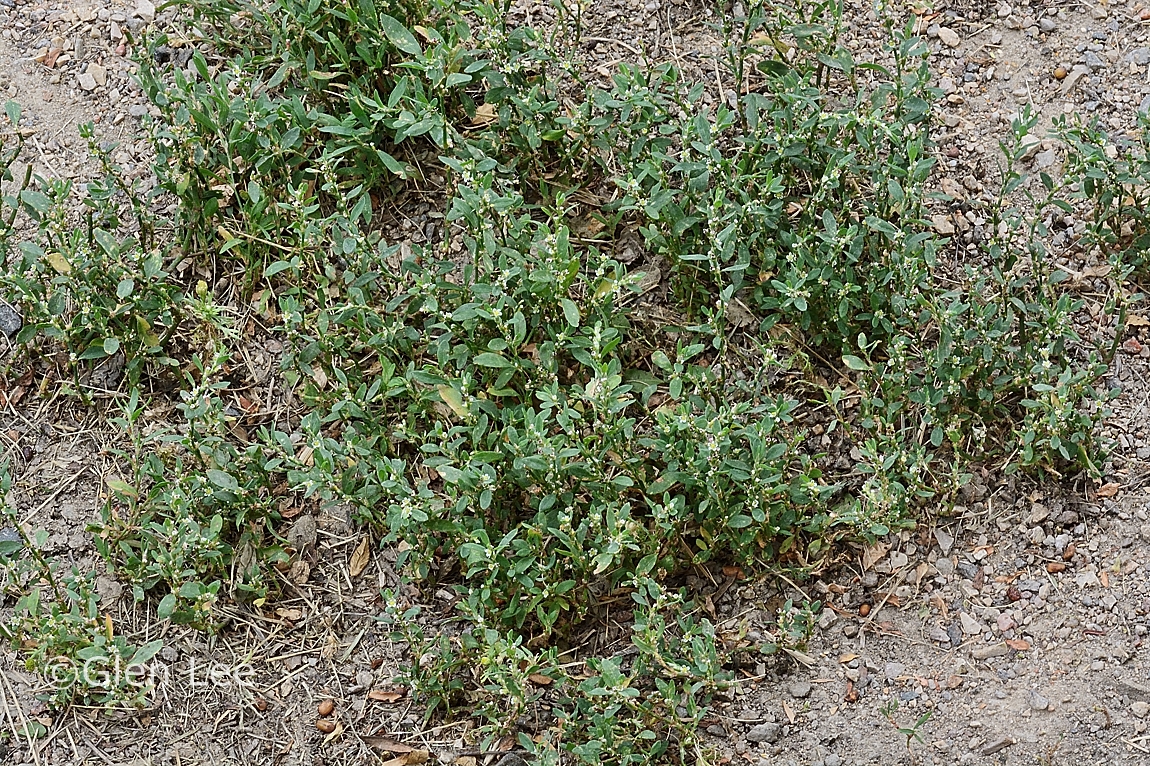
Patch of many plants
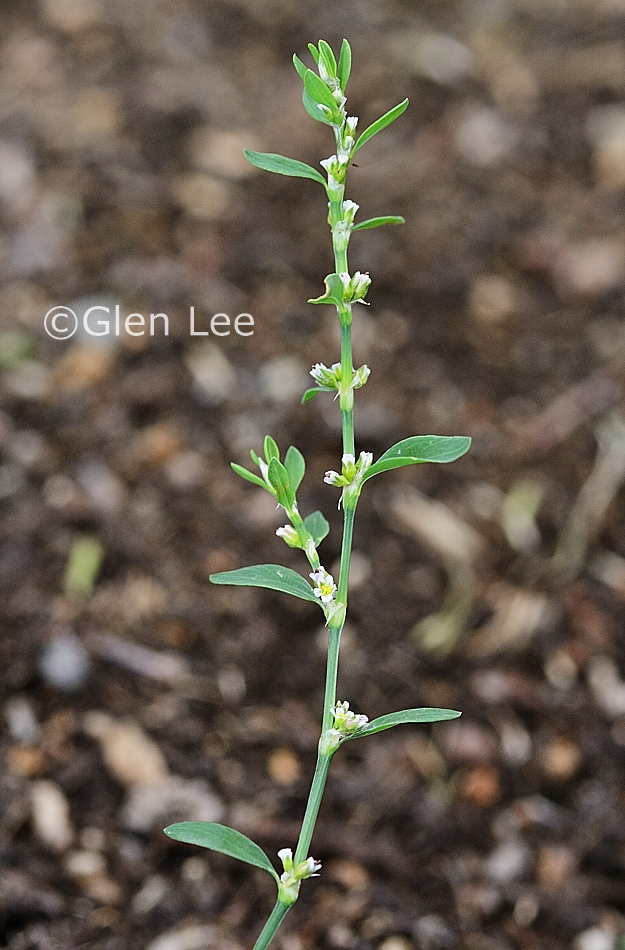
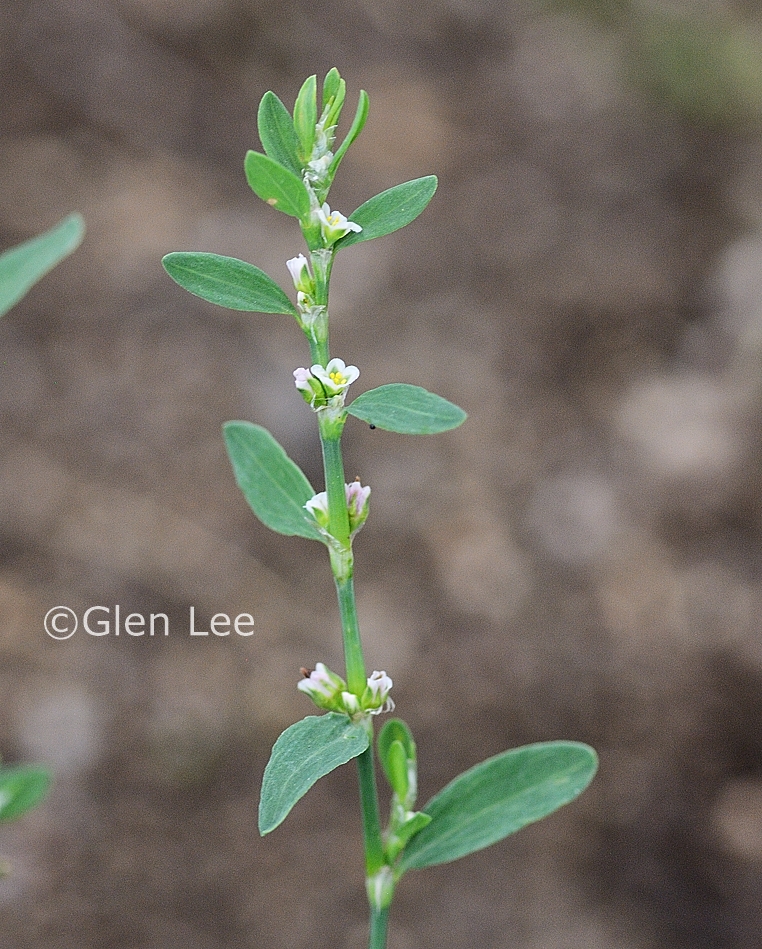
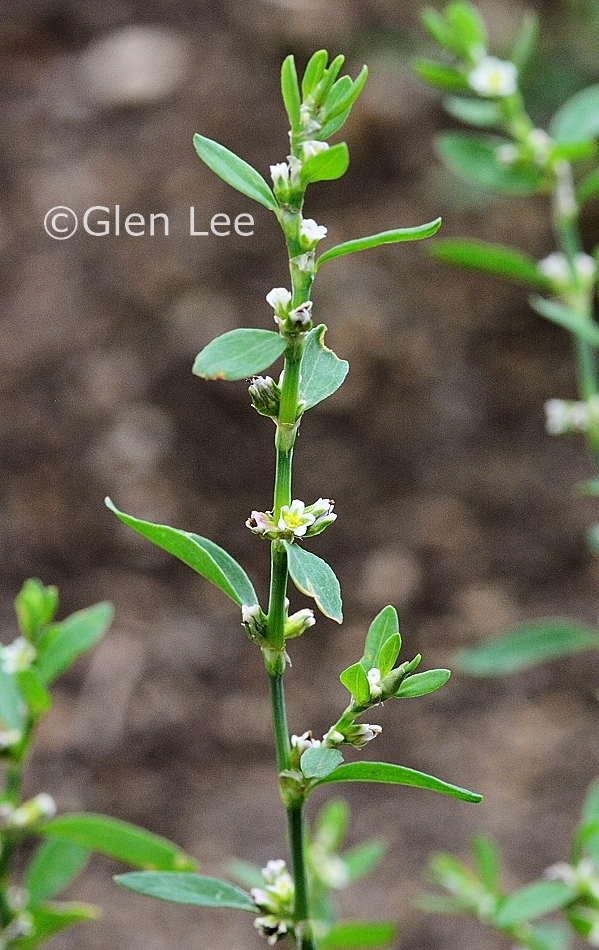
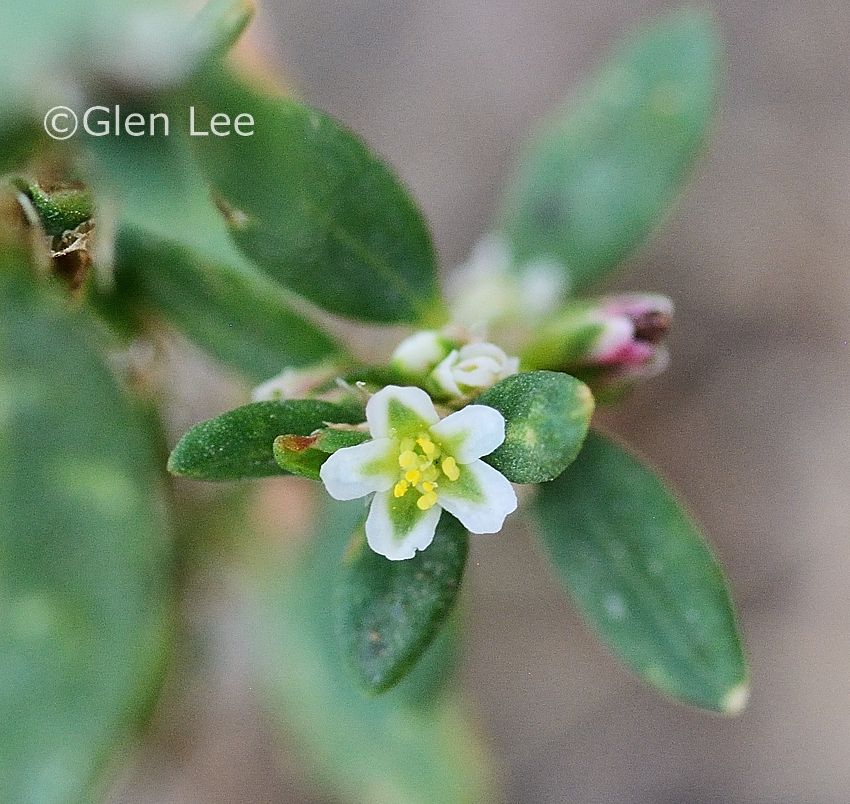
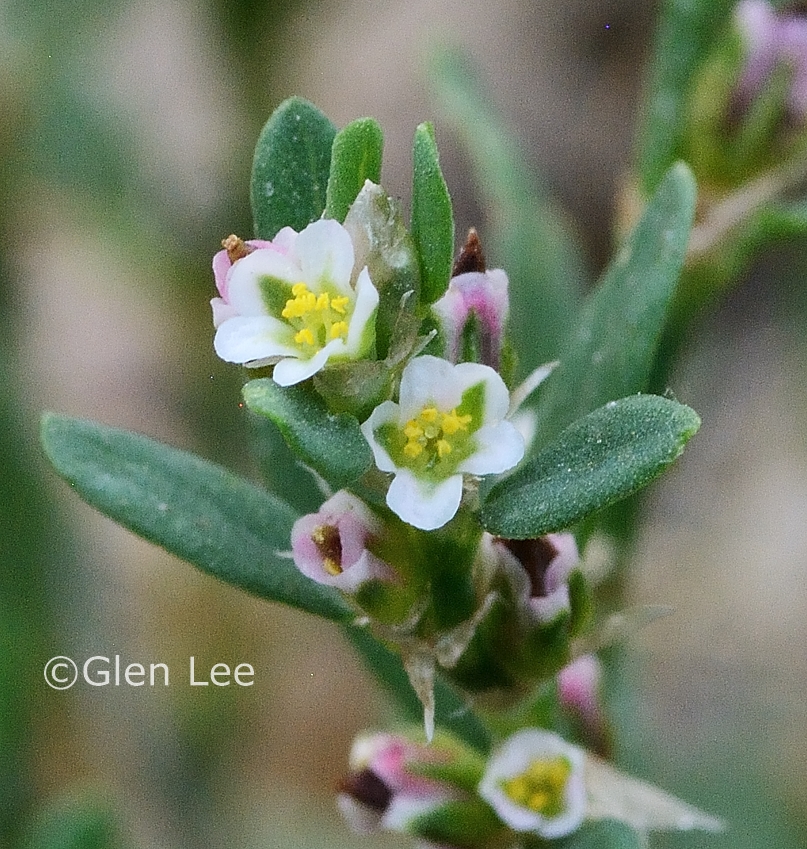
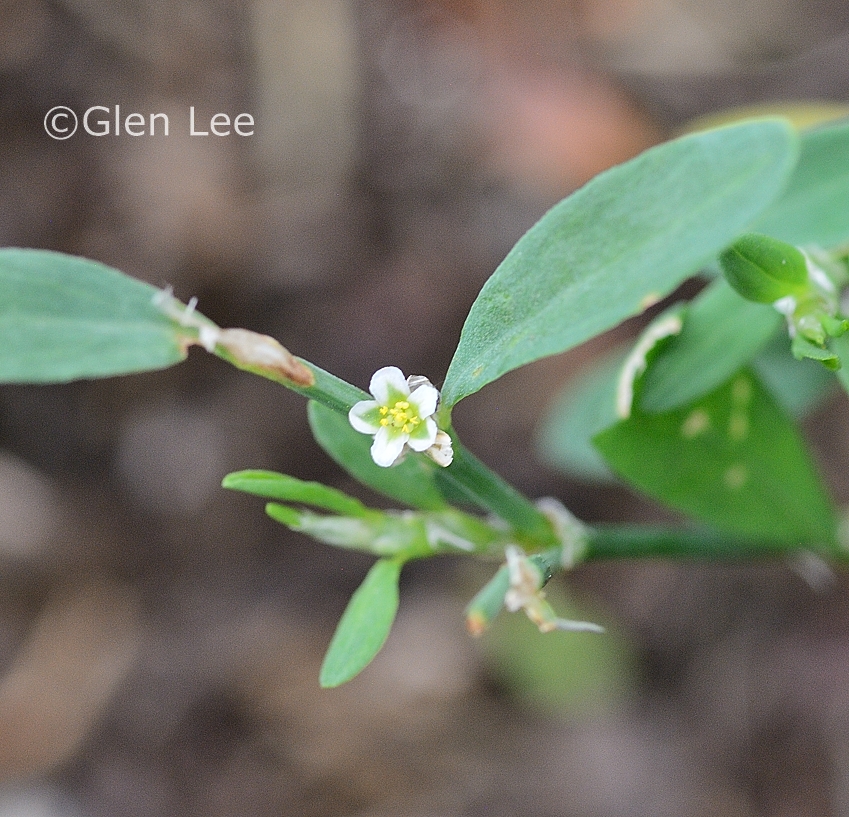
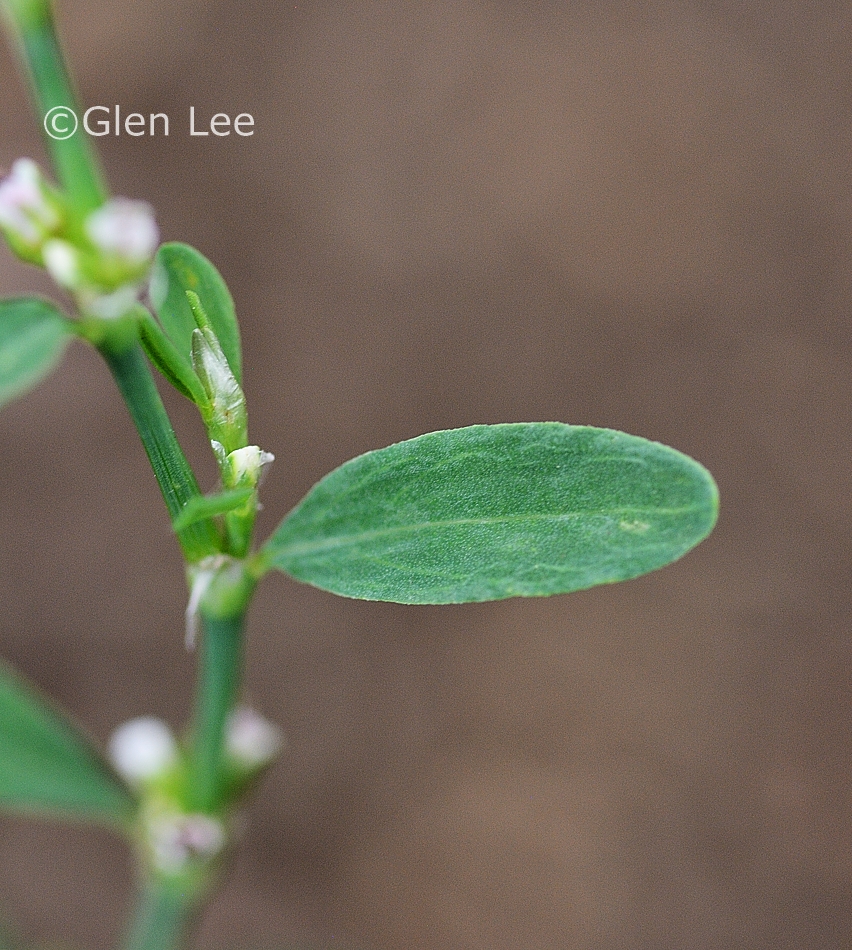
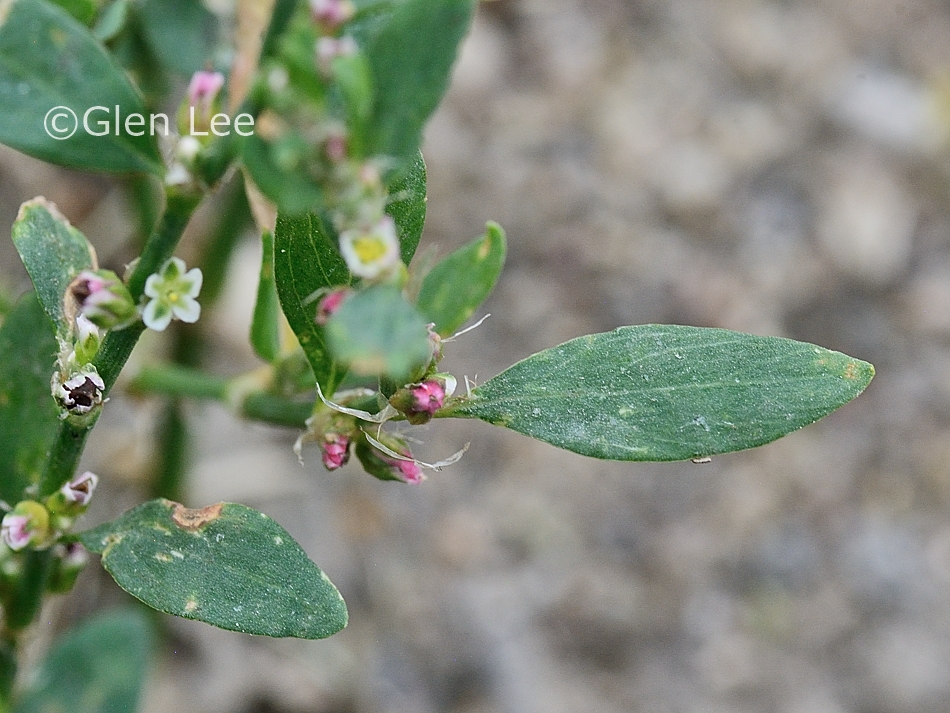
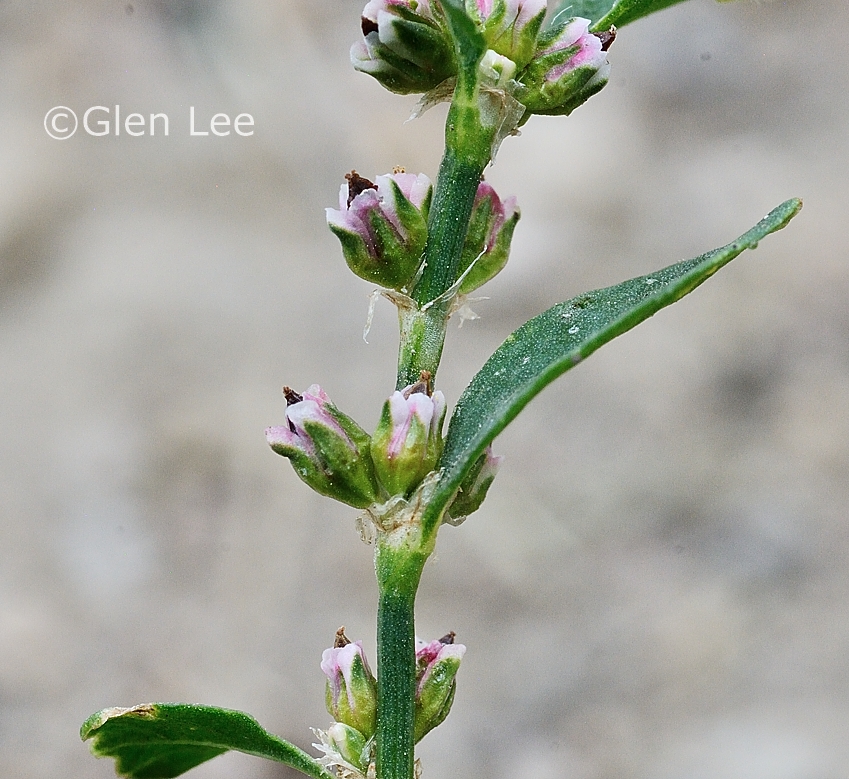
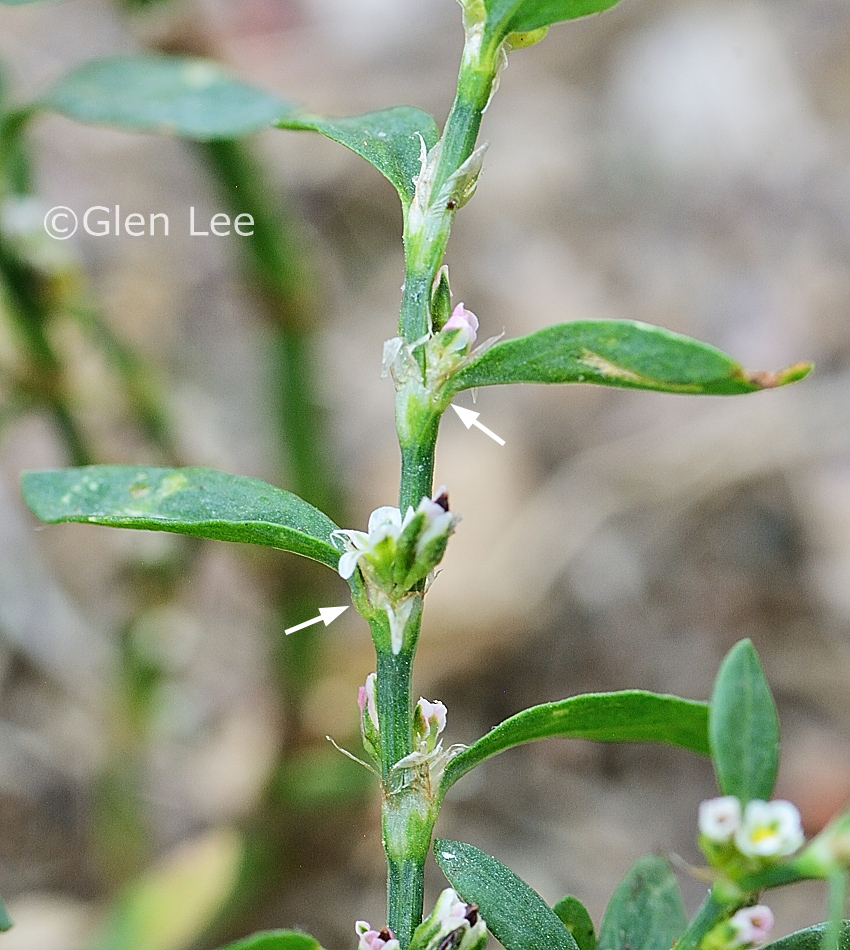
Leaf petioles included in ocreae
Origin: Introduced.
General: Slender annuals branching from the base. Foliage is bluish-green, and the plants have a prostrate to ascending growth habit. Often mat-forming. Plants glabrous, stems wiry. This plant is quite a nuisance weed in our front lawn.
Flowers: The flowers are tiny, petals absent, the sepals greenish to pink with white margins, growing in clusters in leaf axils. We measured a flower at 2.5 mm diameter and 2 mm long.
Leaves: Leaves alternate, narrowly lanceolate to oblong. We measured a leaf at 14 mm long by 5 mm wide. Petioles included in the ocreae, the ocreae translucent and with a ragged margin.
Height: Plant length listed in Budd's Flora to 50 cm long, we measured plants to a spread of 18 cm (and a height of 9.5 cm).
Habitat: Yards, roadsides, waste places.
Abundance: Common.
Synonym: Listed in some of the field guides we use as Polygonum arenastrum.
How to identify this species of Polygonum: Sprawling to ascending, leaves +- oblong to narrowly lanceolate.
Similar species: This plant is similar to P. achoreum which can often be found growing alongside P. aviculare. To distinguish between them:
- Leaf shape: the leaves of P. achoreum are much wider (ovate to obovate), while P. aviculare are much narrower (oblong to narrowly lanceolate). This is the easiest and I think a reliable way to distinguish between these plants.
- Growth habit: the growth habit of P. archoreum is mostly decumbent to erect (rarely prostrate), while the growth habit of P. aviculare is mostly prostrate and rarely decumbent to erect.
- Leaf colour: the leaves of P. achoreum are medium green to dark green, while the leaves of P. aviculare are bluish-green. This is open to interpretation, but I find it generally works.
- Several taxonomic keys list the perianth of P. achoreum connate (united) to above the middle, whereas the perianth of P. aviculare is connate to about the middle. The perianth of these plants are only 3 to 4 mm long, and I find I go cross-eyed looking through a loupe trying to decide if the perianth is united to about the middle or slightly above the middle. I haven't found this useful, instead I just look at the shape of the leaves.
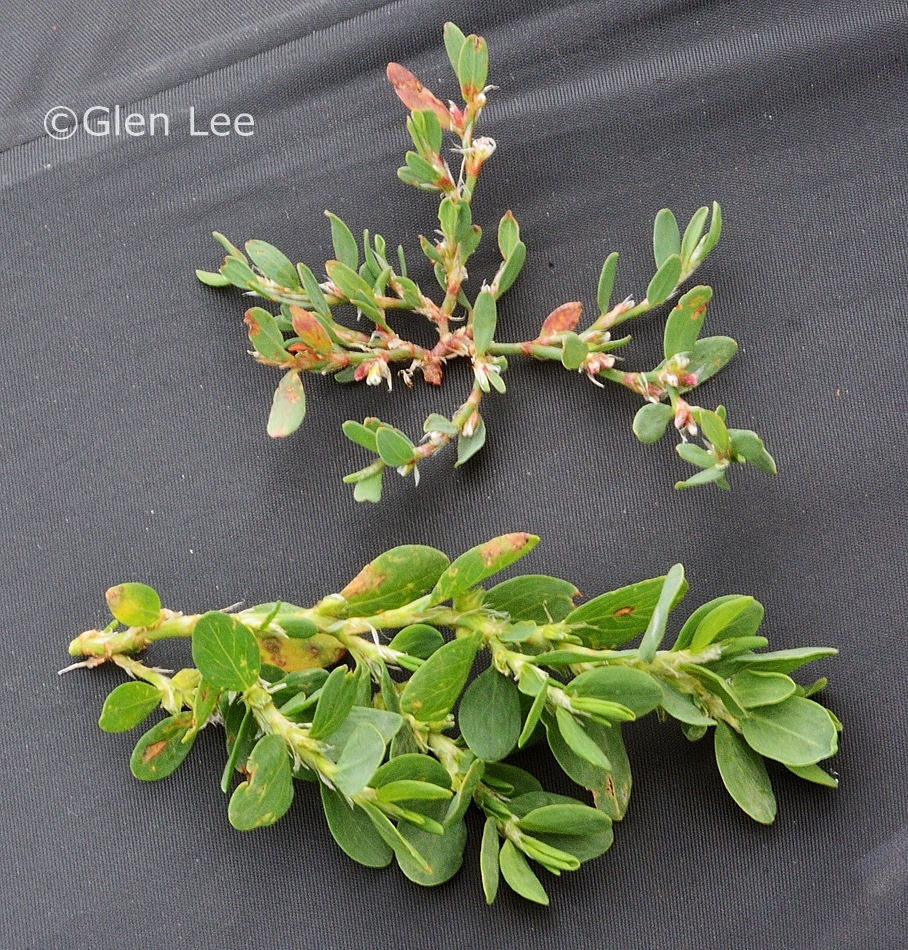
Top: Polygonum aviculare Bottom: Polygonum
achoreum
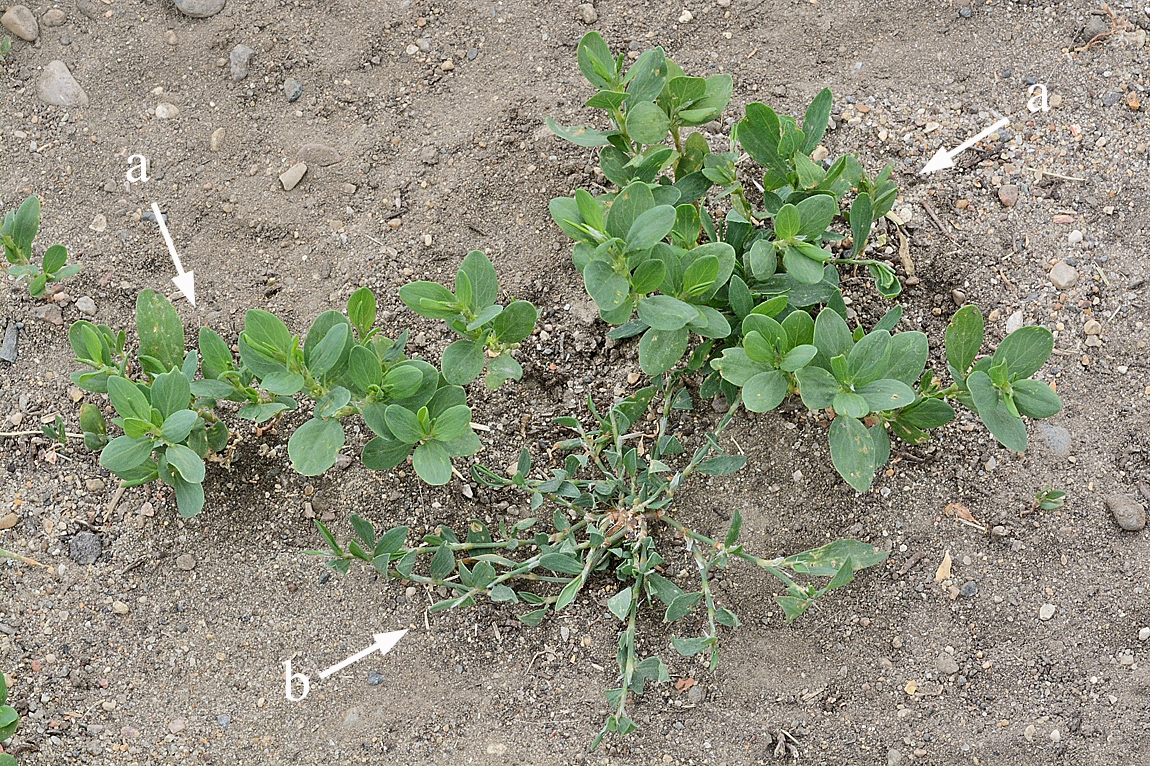 a:
Polygonum achoreum b: Polygonum
aviculare
a:
Polygonum achoreum b: Polygonum
aviculare
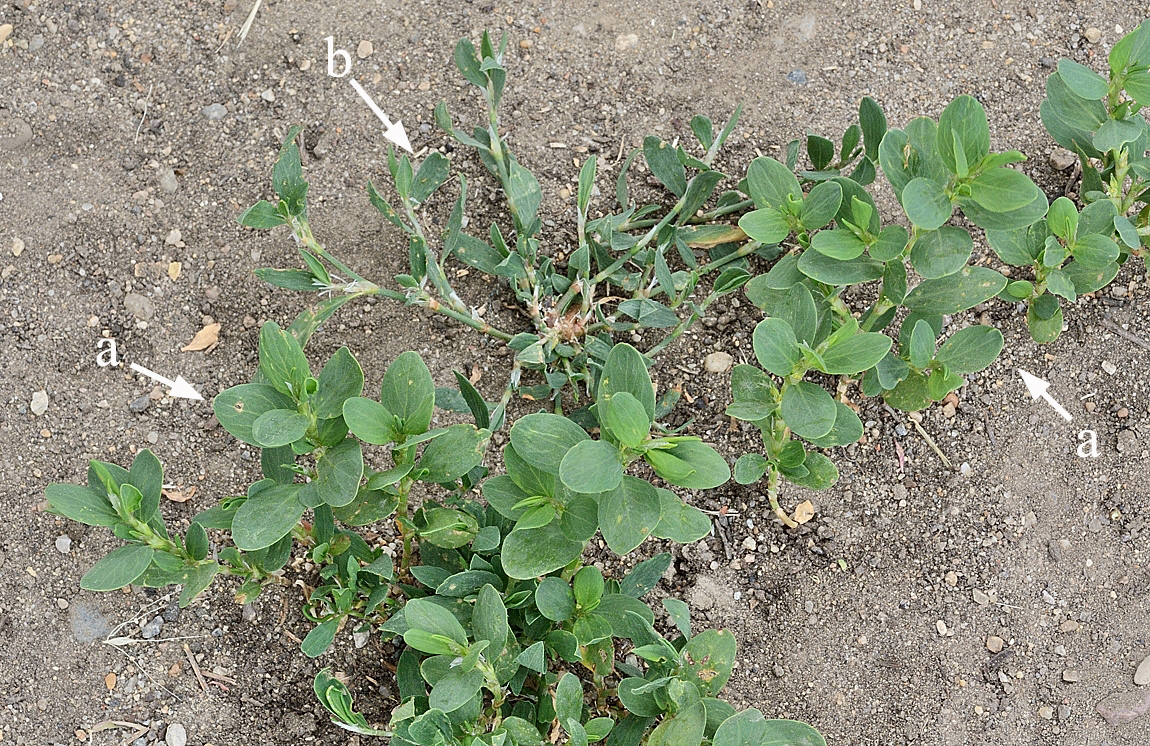
a: Polygonum achoreum b: Polygonum
aviculare
When and where photographed: Photos taken July 8th and 15th edge of lawn in park in Regina, SK, July 15th in a weedy waste area at the University of Regina, and August 9th and 13th, edge of lawn along a gravel bike path in the city of Regina, SK.